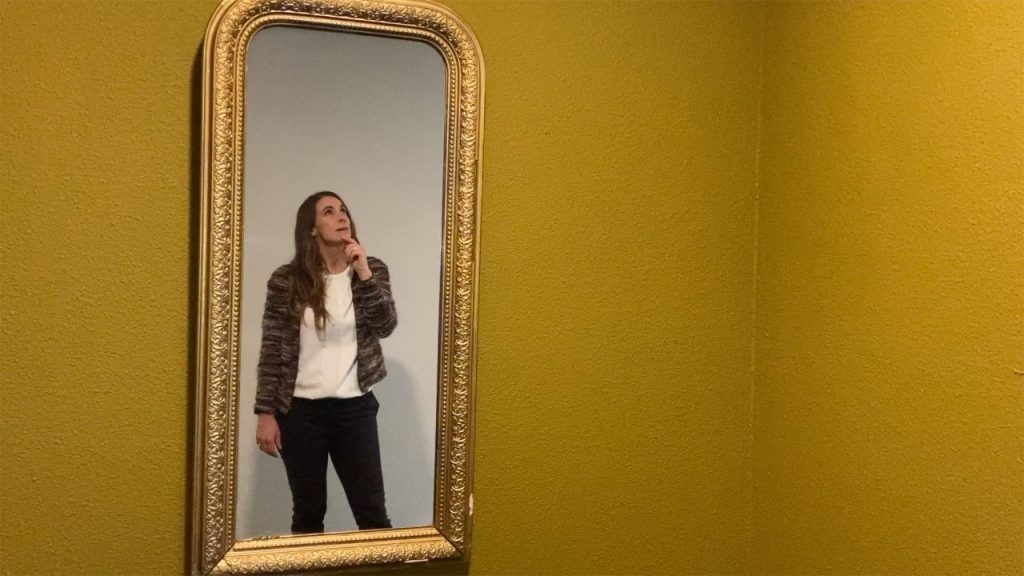You are waiting in the lobby and you will be picked up at any moment by a new customer. The first impression is very important, you are aware of that. You look at your phone for a while until you hear your name. You startle from your thoughts and look up at the person above you. What impression do you make?
Below I have listed a number of tips on what you can be more aware of your non-verbal signals in order to improve your impact. And also how you can give others feedback on their non-verbal signals so that they can increase their impact.
Take this example of an executive coaching client, which I recently met for a first session. I open the front door, he enters and gives a firm handshake. A well-dressed man, with a clear voice. The eye contact is fleeting and he quickly averts his eyes.
He formulates his question in the executive coaching process as: How can I perfect my first impression? How do I come across? And how do I immediately show that I am a senior, an expert?
As he asks this question in the first conversation, I refer to my impression of our first contact. I often ask permission to give my feedback on the first impression, because 9 out of 10 it is related to the coaching question. And giving constructive feedback is a skill: I’ll cover that subject in another blog sometime soon.
So what are those 6 non-verbal signals to improve on?
1. Shake hands

This has of course become more difficult since Covid. But it all starts with the first handshake. Literally, with an impression. If you do shake hands, give the other person a firm hand to show that you have a strong character. Now, you shouldn’t squeeze the hand completely, but don’t give a limp hand.
And if something went wrong in shaking hands, just say, “Oh, that went wrong, let’s do it again.” This immediately provides openness and transparency in communication. A good start.
2. Eye contact
Eye contact says a lot and can sometimes feel quite intense or daunting. Looking away or avoiding eye contact can be interpreted as either shy or arrogant.
A tip is not to sit and stare, but look directly at the other person.
Difficult? Then look at the area around the eyes, as if you were looking at a diving mask around the eyes. Eye contact shows that you are interested in the other person and that you are strong; you really meet the other.

3. Facial movements
Nodding and laughing when someone is talking shows that you are interested in what the other person is saying. As a result, you are building ‘report’. In other words, the other person feels welcome and experiences connection.
Do you want to appear more knowledgeable or exude more authority? Look at the other person with an open facial expression, although you smile and nod less. This will appear more calm, grounded and focused
4. Posture

Shoulders relaxed and back. And make sure you are standing straight. Posture says a lot about you. It makes you feel and appear confident.
Where do you put your arms and hands? You can casually have your arms at your sides or fold your hands together. Mind you, don’t intertwine your hands. By placing the hands open on top of each other, you can more easily make gestures with your hands or shake hands. In this way you can adopt an open attitude, which can be interpreted as being interested.
5. Mirror
If, in addition to paying attention to your own attitude, you also look at the body language of the other person. You can “read” a lot about how the other person thinks or how that person feels. Subconsciously when we like people, we adopt the same body posture. Take a look at a terrace with two friends having a conversation. Often they take a sip of their drinks at the same time or having the same posture with their legs or arms.
You unconsciously adapt to the other. You can of course also use this consciously. For example, when someone is sitting very quietly opposite you, that you do not start talking with elaborate hand gestures. Or if the other has a more formal approach, you will mimic the same.

6. Voice

In addition to expressing something verbally, the voice also has a non-verbal side. Think of intonation, timbre, speed, hard or soft voice.
What happens to your voice when you are tense? Do you talk faster and more, or do you become quieter and your voice gets more muffled? Or are you going to talk monotonously?
Do you want more insight into your own non-verbal signals and your first impression?
Do you want to increase a personal impact? Please feel free to plan a 30-minute introductory meeting without obligation.
Let’s connect and see how I can help you with your question.


